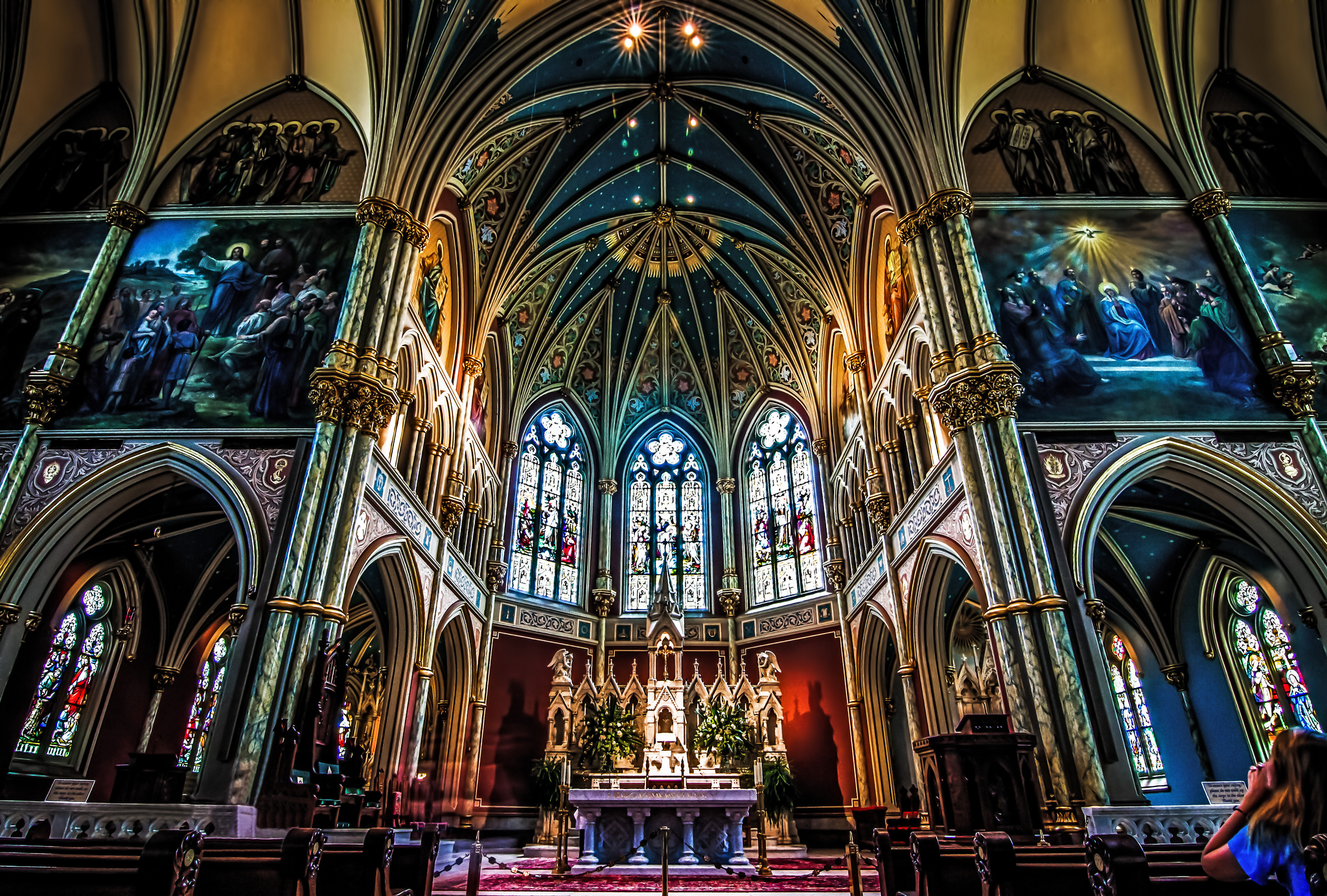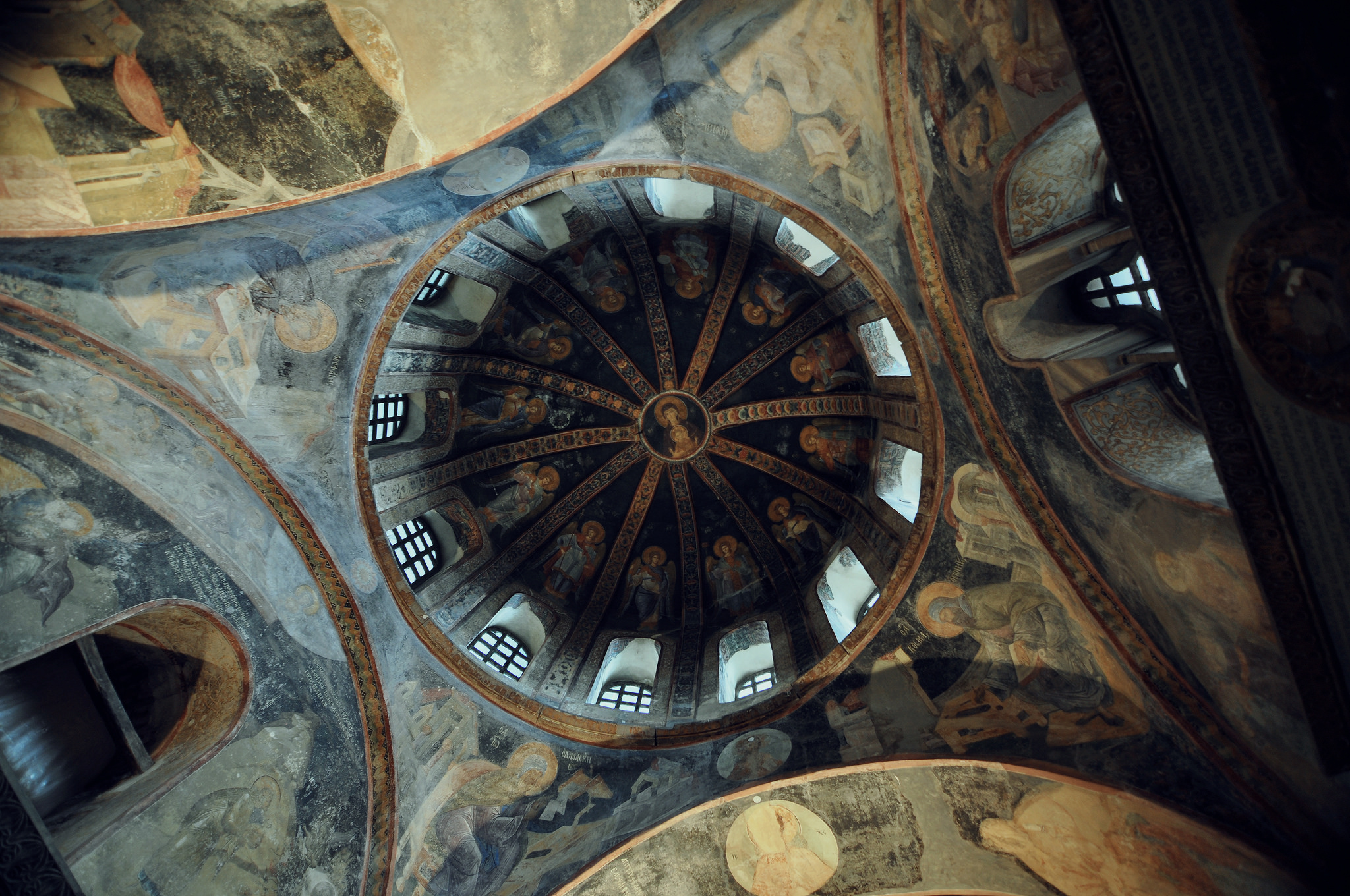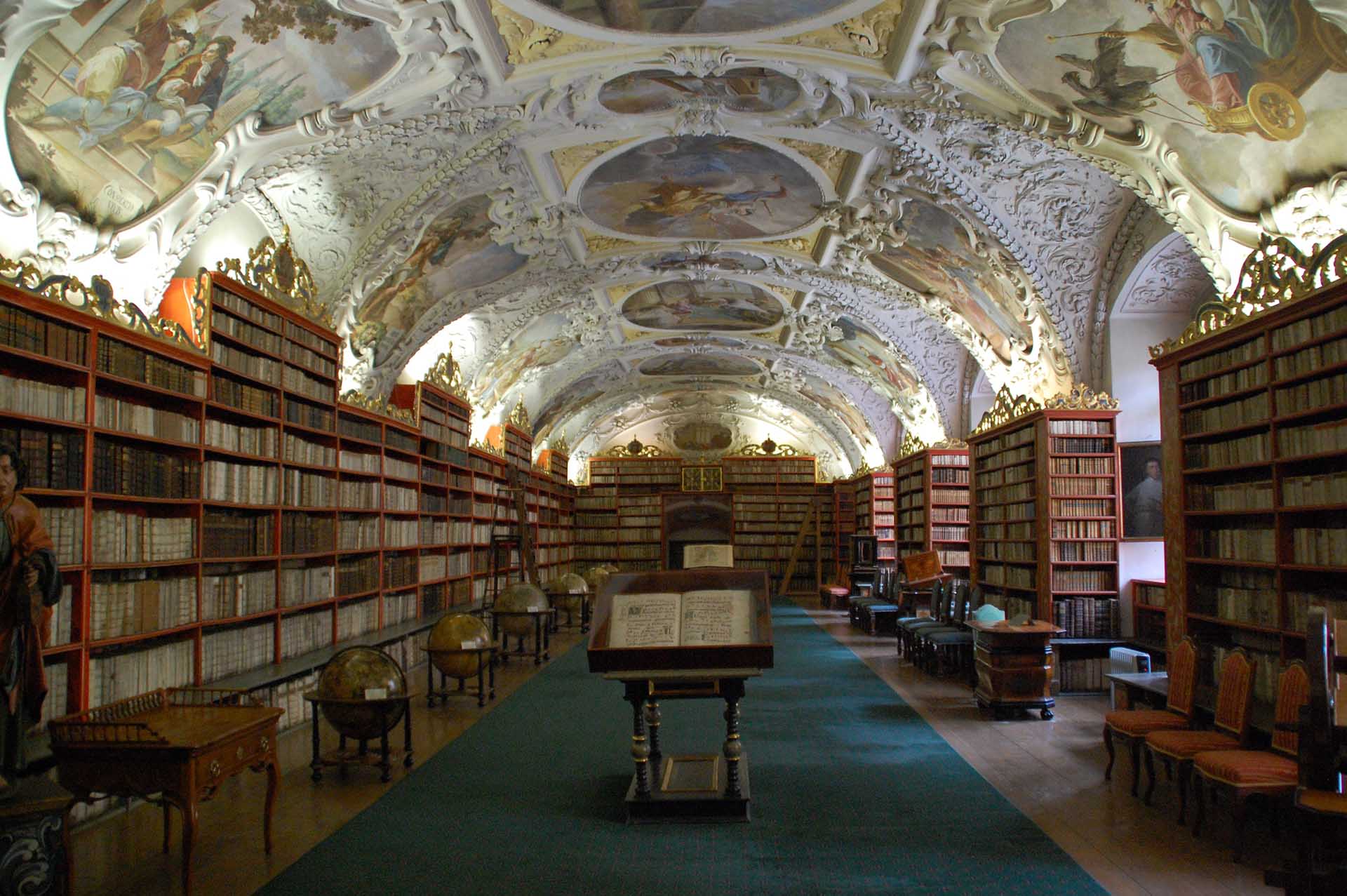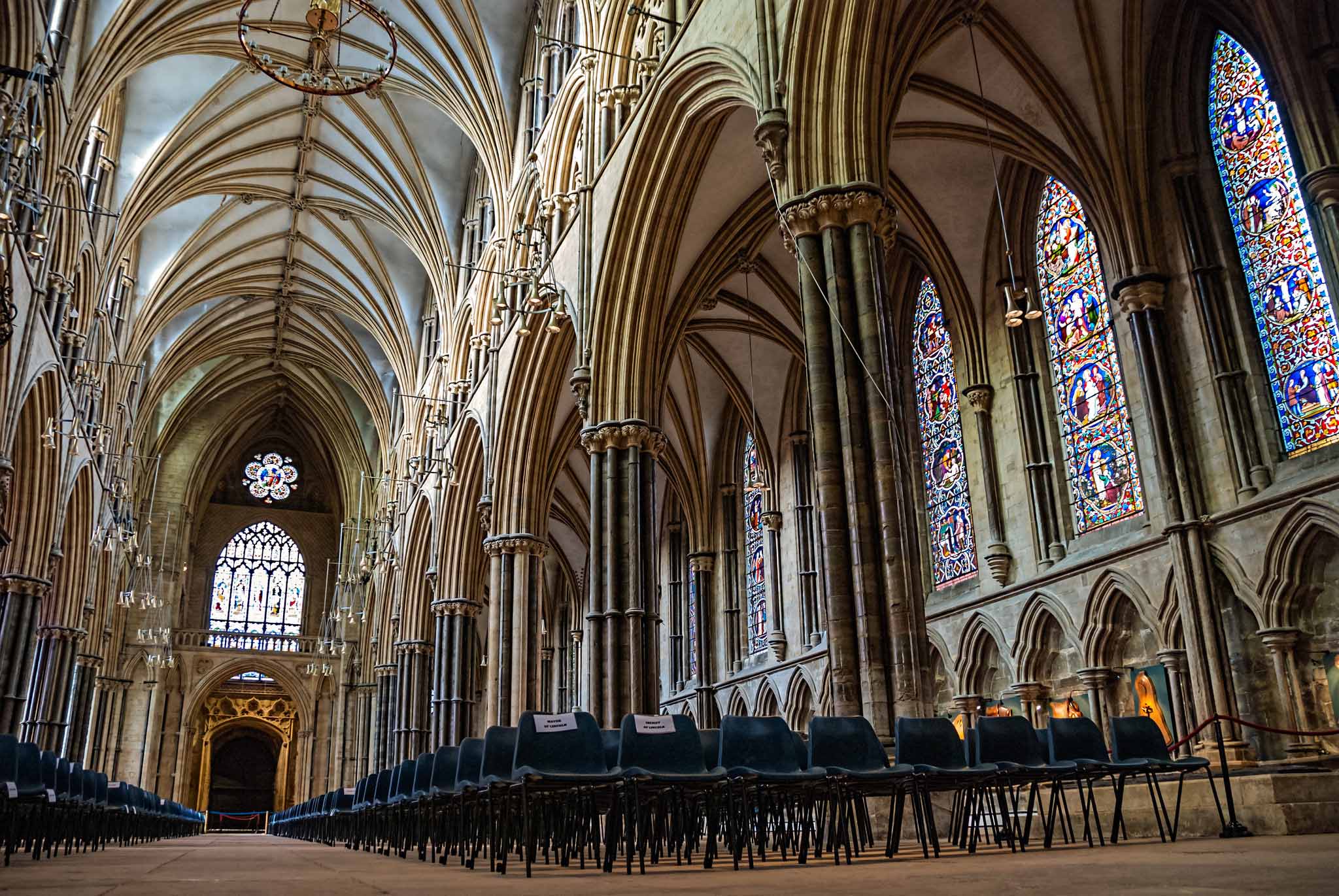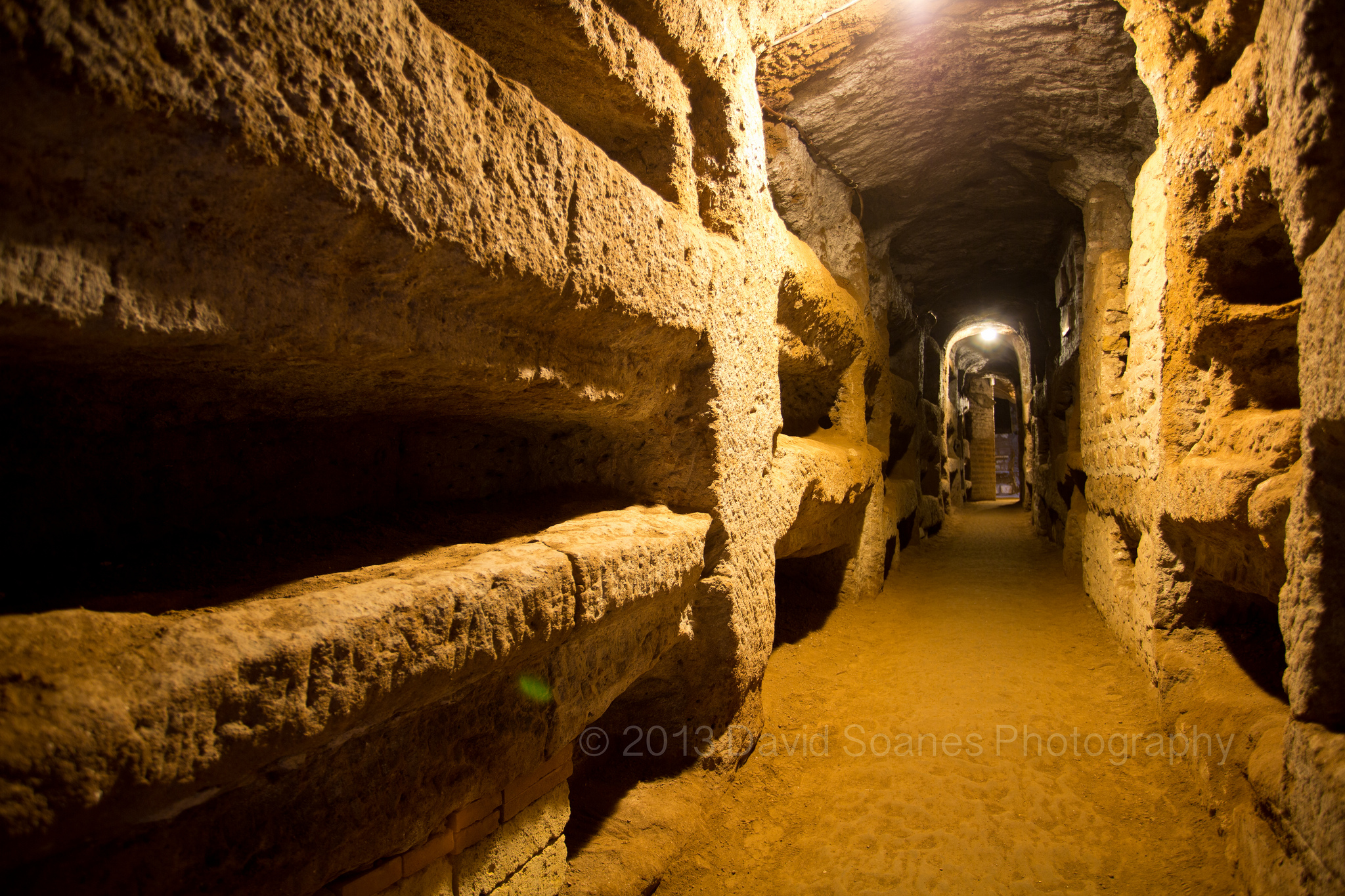Welcome to the catacombs
© Copyright 2013, T. Stanfill Benns (This text may be downloaded or printed out for private reading, but it may not be uploaded to another Internet site or published, electronically or otherwise, without express written permission from the author. All emphasis within quotes is the author’s unless indicated otherwise.)
In an effort to reassign a fitting name to those praying at home, and lose the pejorative term “homealoners,” assigned to us by the Traditionalist Anthony Cekada, this site page is dedicated to catacomb Catholics. Do we call ourselves catacomb Catholics? No; a better way to explain who we are is to describe ourselves as simply Catholics living in the virtual catacombs or Catholics who pray at home. This term can be used for distinguishing us from Traditionalists, but we do not want to lose sight of what Pope Benedict XV wrote in his 1914 encyclical Ad Beatissimi Apostolorum:
“It is, moreover, Our will that Catholics should abstain from certain appellations which have recently been brought into use to distinguish one group of Catholics from another. They are to be avoided not only as “profane novelties of words,” out of harmony with both truth and justice, but also because they give rise to great trouble and confusion among Catholics. Such is the nature of Catholicism that it does not admit of more or less, but must be held as a whole or as a whole rejected: “This is the Catholic faith, which unless a man believe faithfully and firmly; he cannot be saved” (Athanas. Creed). There is no need of adding any qualifying terms to the profession of Catholicism: it is quite enough for each one to proclaim “Christian is my name and Catholic my surname,” only let him endeavour to be in reality what he calls himself.”
Those who observe the faith in the privacy of their homes may or may not choose to be identified as “catacomb Catholics.” These individuals are spread out across the world and cannot be treated as a readily identifiable group, but many of them are in contact with each other. They believe that for reasons of safety, it is best this is the case and I agree. They can come to this board to take what they need or they may never even know it exists; in either case it is not my concern. What I print here comes directly from the teachings of the Church and as such should be made available to all.
As one theologian has pointed out, our understanding of the faith, and the understanding of the faith that we impart to others, is only as good as the language we use to describe it. “Homealone” does not accurately describe the stance of those who hold this position and to dignify their beliefs, a better term is needed, for reasons of clarity. I do not believe that the Catholics in this group will object to this. As explained in the two-part series under this heading, “The Church of Silence,” this new term for those choosing not to affiliate with any group aligns them with those suffering for the faith from the beginning. It also effectively links them to the last known group of Catholics left without priests known to exist prior to the death of Pope Pius XII: those behind the Iron Curtain in Communist Europe. In faith and belief, we are one and the same as those Catholics. And in spirit at least, their efforts to practice that faith, their experiences and their sorrows were and are our own.
Since the earliest days, and actually since the time of the Babylonian Captivity in the Old Testament, those who love God have kept their faith privately despite a lack of ministers to serve them. In the early centuries of the Church, the faithful hid in the catacombs of Rome where they had access to bishops and priests, until they were martyred or imprisoned. There later were those who were forced to keep the faith alive on their own during the Arian heresy because those clergy who remained Catholic were so few in number that they were able to minister to them only infrequently at best. Until the faith spread across all of Europe, certainly there was a dearth of clergy to say Mass and confer the Sacraments. During the Protestant Reformation we know the English and Irish were forced to hear Mass secretly and that it was rarely available.
This also was true for a time following the French Revolution, when St. John Vianney was a young boy. For over 200 years the Japanese were forbidden to practice their faith and so practiced it in secret; they had no bishops or priests. On the American frontier, especially in the Southwest, Catholics went for years, sometimes for a lifetime, without ever seeing a priest. Those behind the Iron Curtain following the Communist takeover of Russia, Eastern Europe and later China were forced to keep the faith secretly or suffer death or imprisonment. Catacomb Catholics during those times would not seek the Sacraments from the Orthodox or national churches because they knew they were schismatic. Yet Traditionalists think nothing of attending Orthodox services today.
Today’s Catacomb Catholics do nothing different than their persecuted forbearerers did, only their persecutors are fellow “Catholics.” They see that there are no certainly valid hierarchy or priests available and rather than consult schismatics, they simply pray the Mass in home chapels or at family altars in the home. They baptize each other’s children and witness civil marriage. They make perfect Acts of Contrition and Spiritual Communions. They do all this to avoid communicatio in sacris and to keep the Deposit of Faith whole and unimpaired. Most believe that we live in the time of Antichrist and that the Mass has ceased. They obey Canon Law and papal law, up to the pontificate of Pope Pius XII. Many homeschool their children and live in rural areas. Their main concern is keeping the faith alive for their children. They do their best to reach out to others interested in the faith and to work for the salvation of souls. Many feel isolated and unable to do as much as they could or should do. But their numbers are so few that it is difficult to accomplish anything on a larger scale.
This is not yet another attempt to practice group Catholicism minus the pope. If anything has been demonstrated in the articles posted to this site, it is the impossibility of recreating a juridic Church unless a canonically elected Pope be the head of that Church. Catholics, however, who have completed the three-year probationary period suggested on embracing stay-at-home Catholicism often find themselves desirous of doing more on an outreach scale. Many have expressed the hope that they could convince Traditionalists and even others of the need to truly convert and simply pray and watch together as members of the Mystical Body.
In commanding Catholic Action, the Popes have left a way open to work together for the salvation of souls, provided certain conditions are fulfilled. It would depend in large part on whether such Catholics can develop a true devotion to the interior life and a comprehensive understanding of the virtue of charity. And here we do not mean the liberal brand of charity practiced today by so many Traditionalists and even some of those who stay at home. For working for the salvation of souls IS true charity, although many believe it is a waste of time and an impossible dream. But it also requires the practice of charity among those who undertake this work, and this is where the need for delicacy and restraint enter in. If anything be done in the way of Catholic Action, Catholics would need to carefully follow any guidelines set down by the popes for engaging in this apostolate. Please read the teachings of the popes in the article on Catholic Action at: /articles/a-catholics-course-of-study/the-church/the-popes-on-catholic-action/
As Pope St. Pius X says in this article, we have no excuse whatsoever not to obey the commands of the popes to spread the faith when and wherever it is possible. This, Pope Pius XII told lay apostles in 1957, is the DUTY of Catholics in the absence of the hierarchy. In fact if we fail to obey their commands, then we question their supreme authority. The successors of St. Peter who have gone to their eternal reward are as much members of the Mystical Body as we are today, for that Body encompasses the Church Militant, the Church Suffering and the Church Triumphant. Infallible decrees bind perpetually, for the Church is the same forever: Eadem Sempiternum. Revs. Devivier and Sasia, S.J. wrote. “If we ascend the course of ages, even to Apostolic times, we see the same identical doctrine professed by the Faithful throughout Christendom… (We) say, with St. Vincent of Lerins: ‘We hold that which has been believed everywhere, always and by all,” (Christian Apologetics). The Vatican Council (DZ 1800) and Pope St. Pius X in his oath against Modernism (DZ 2145) define the changelessness of the Church as dogma. From the earliest days of Christianity, Catholics have kept their faith and saved their souls in times of persecution without the clergy; they have cooperated with the bishops and priests or functioned in their stead to spread the faith; they have defied incredible odds to pass the faith onto future generations.
Catholics living in the virtual catacombs of today — virtual meaning “Being such in essence or effect though not formally recognized “ — believe in all aspects of this timeless Tradition and know that they must observe the conditions set down by Pope Pius XII concerning their functions in the absence of the hierarchy. This means that they must follow all teachings on faith and morals, obey all the laws of the Church, and never do anything against the implicit or explicit will of the Church. Those Catholics praying at home have their critics but these critics have never been able to offer proofs that staying away from Traditional chapels is sinful in any way. Indeed they cannot; for no one could ever prove that a faithful Catholic was obligated to participate in any service or group not in communion with a true pope. All roads lead to Peter and His Master. Catholics would fail in their duties as spelled out by Pius XII were they to neglect to spread the faith and warn others about the dangers of Traditionalism. The only question is how best to accomplish this task, and that will be addressed in future articles.
See St. Gabriel (Possenti) copy to be added under “Martyrs,” # 3:
St. Gabriel of Our Lady of Sorrows
St. Gabriel of Our Lady of Sorrows is a wonderful saint to invoke for those tempted to succumb to “peer pressure” and those longing to become priests in those days but prevented by the lack of valid hierarchy. Never one to indulge in human respect, this saint braved the disapproval of his father and siblings to enter religious life. He would later systematically strip himself of everything that stood between himself and God.
Francis Possenti was born in Assisi, Italy on March 1, 1838, the eleventh child in his family. His father was the governor of Assisi, his mother a homemaker. Before he was three, Francis’ mother died. The boy’s father comforted him by repeating that his mother’s death was “…the adorable will of God.” It was to become the theme of Francis’ life.
Francis was a good student, an obedient and loving son. He was drawn to the religious life even as a child. While his family was devout, they also enjoyed the finer things of life. As a teen and young man Francis was known as a dandy, a fine dancer and a frequenter of parties and the opera house. It wasn’t until tragedy struck the Possenti family that Francis began to open his eyes. An older brother died fighting Italy’s war for independence, then a second brother committed suicide after becoming involved in a Masonic sect. Finally Francis’ favorite sister died at a young age. On the feast of the Immaculate Heart of Mary, Francis’ received a message from Our Lady begging him to follow his vocation. On the eve of his engagement, ignoring the objections of his family, Francis entered the Passionist Order, convinced it was God’s will.
As a brother studying for the priesthood, he chose the name Gabriel of Our Lady of Sorrows because the Blessed Mother stood close to the cross. Despite ill health, he performed strenuous penances and steadily purged his life of all earthly dross. In letters and in person, he repeatedly entreated his father and siblings to become more devout and abandon worldly things, refusing to discontinue the religious life as they advised.
St. Gabriel is a model saint for our times because he longed to be a priest but was prevented again and again, by circumstances and ill health, from advancing beyond first tonsure. He never complained or questioned the delay, humbly accepting it as God’s will for him. Truly his devotion to Our Lady of Sorrows marks him as one of our special saints for today. In a letter to his father, he wrote the following inspiring words: “That loving Virgin of Sorrows, who cannot behold our misery without compassion, holds us in peace beneath her mantle. The sword which pierced her most pure and loving heart is now wielded by her in our defense. If we show compassion for Mary in her sorrows, she will infallibly share in the grief of ours. Oh how sweet and safe it is to surrender ourselves to her care! If Mary be for us, who shall prevail against us?”
The following are excerpts from a prayer St. Gabriel wrote to the Mother of Sorrows for a happy death during his final illness:
“O Mother of Sorrows, by the anguish and love which thou didst stand by the Cross of Jesus, stand by me in my last agony.
“To thy maternal heart I commend the last three hours of my life. Offer these hours to the Eternal Father in union with the agony of our dear Lord in atonement for my sins.
“Offer to the Eternal Father the most Precious Blood of Jesus Christ, mingled with thy tears on Calvary, so that I may obtain the grace of… the most perfect love and contrition before my death, that I may breathe forth my soul in the presence of Jesus.
“Dearest Mother of Sorrows, when the moment of my death has come, present me to Jesus as your child. Make him to receive me into the Kingdom of his glory to be united with him forever and ever Amen.”
Gabriel could have married and enjoyed an easy life in this world had he followed the advice of his family. Instead he obeyed the call of the Immaculate Heart of Mary to study for the priesthood. And when he became ill, he begged God for an early death, a request that was quickly answered. Having successfully overcome human respect, God received His son Gabriel into the heavenly kingdom on Feb. 22, just two days short of his 24th birthday. His dying words, accompanied by an angelic smile, were, “Mother mine, make haste, please hurry.” And you, St. Gabriel, please hasten us to heaven.
St. Hermenegild copy to be added under “Martyrs,” #6:
Faith and constancy win the day
Those who choose to pray at home sometimes feel that they are being asked to do the impossible, or that the Sacraments they so treasured, which are no longer available to them are a very dear sacrifice that few have ever been asked to make. But this is only an illusion. For while we may hear little of such saints and know indeed little of their sacrifices in times past, the English, the Irish, the Japanese, the French during the Revolution, Russians and others behind the Iron Curtain both before and after the Bolshevik Revolution — all were deprived of the Sacraments and many chose to die as martyrs rather than receive them from the hands of schismatics and heretics. But no one today thinks of these martyrs.
Below we read the life of St. Hermenegild, taken from Lives of the Saints, With Reflections for Every Day in the Year, by Alban Butler, 1894. Hermenegild was one of those many saints mentioned above, and it is amazing to see that rather than profane the Blessed Sacrament, he chose to die, just as the young St. Tarcisius died defending the Holy Eucharist from the pagans. We may not be asked to give our lives for refusing to profane our Lord’s Body and Blood, but if we persevere to the end in refusing to receive the Sacrament from those who are unable to confect it, we will, in obeying God rather than offending Him, offer to Him a white martyrdom such as was suffered by Our Lady and St. John the Beloved Apostle. And this is most fitting, since they are the two who stood with Our Lord at the foot of the cross to the end. So may we all remain there until the very end, in this the passion of His Mystical Body on earth.
April 13 — ST. Hermenegild, Martyr
Leovigild, King of the Visigoths, had two sons, Hermenegild and Recared, who reigned conjointly with him. All three were Arians, but Hermenegild married a zealous Catholic, the daughter of Sigebert, King of France, and by her holy example was converted to the faith. His father, on hearing the news, denounced him as a traitor, and marched to seize his person. Hermenegild tried to rally the Catholics of Spain in his defense, but they were too weak to make any stand, and, after a two years’ fruitless struggle, he surrendered on the assurance of a free pardon. When safely in the royal camp, the king had him loaded with fetters and cast info a foul dungeon at Seville.
Tortures and bribes were in turn employed to shake his faith, but Hermenegild wrote to his father that he held the crown as nothing, and preferred to lose sceptre and life rather than betray the truth of God. At length, Easter night, an Arian bishop entered his cell, and promised him his father’s pardon if he would but receive Communion at his hands. Hermenegild indignantly rejected the offer and knelt with joy for his death-stroke. The same night a light streaming from his cell told the Christians who were watching near that the martyr had won his crown, and was keeping his Easter with the Saints in glory.
Leovigild on his death-bed, though still an Arian, bade Recared seek out St. Leander, whom he had himself cruelly persecuted, and, following Hermenegild’s example, be received by him into the Church. Recared did so, and on his father’s death labored so earnestly for the extirpation of Arianism that he brought over the whole nation of the Visigoths to the Church. “Nor is it to be wondered,” says St. Gregory, “that he came thus to be a preacher of the true faith, seeing that he was brother of a martyr, whose merits did help him to bring so many into the lap of God’s Church.”
Reflection — St. Hermenegild teaches us that constancy and sacrifice are the best arguments for the Faith, and the surest way to win souls to God.
